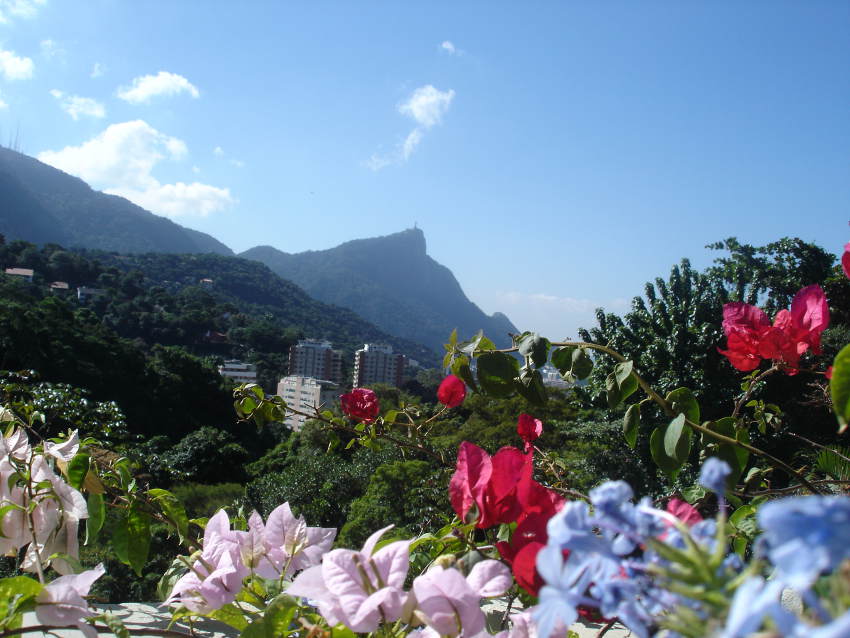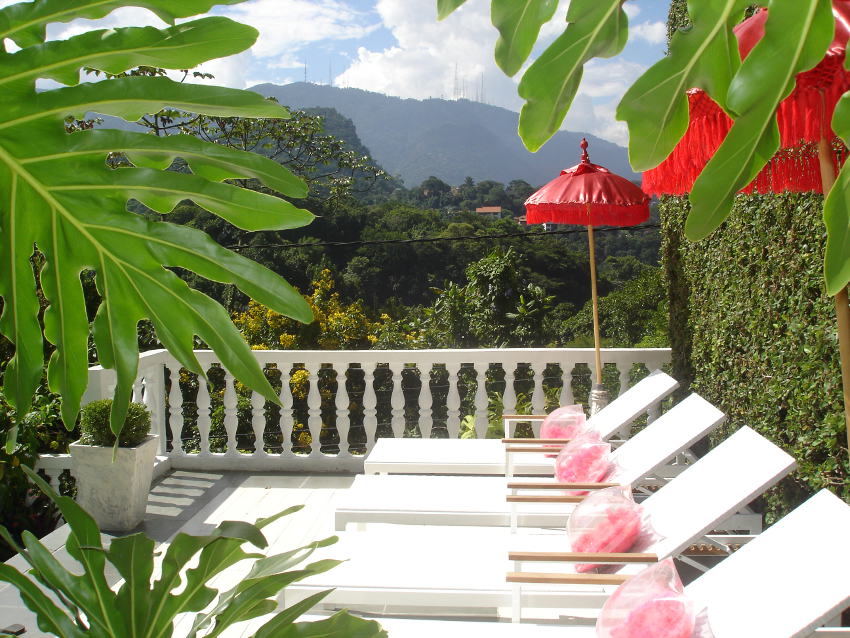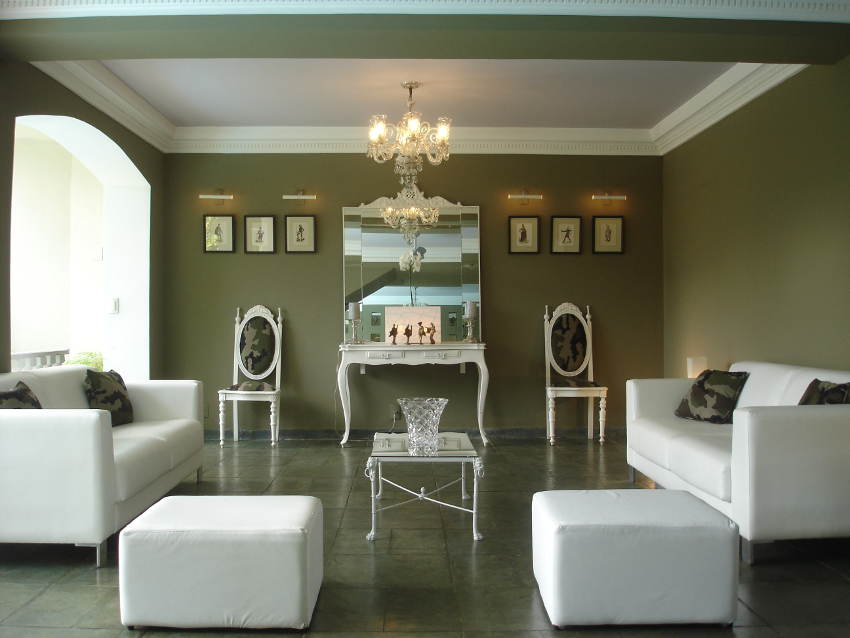“Aqui estamos no meio do nada”, our surly bus driver quipped as he tossed our backpacks to us. Here we are, in the middle of nowhere. It seemed a bit of an exaggeration: while the deserted street in Rio’s Gávea district was admittedly poles apart from the bustling sands of Copacabana and Ipanema, it was hardly a total backwater. Instead it’s the sort of leafy residential neighbourhood where Rio’s wealthier inhabitants reside behind their high walls and security cameras, no doubt attracted by its prestigious private university and American school as much as its lofty views.

La Maison by Dussol blends right in with these properties. With just four bedrooms, two airy, quiet lounges and a sliver of turquoise pool (with two hotly contested sun beds), in many ways it really does feel like more like lodging at an affluent friend’s house than a hotel. A stylish yet eccentric friend, that is. The decor is an essay in shabby chic: there’s a sitting room with hot pink walls and aubergine velvet couches filled with antique Oriental furniture, objets d’art, orchids and glossy coffee table books, while our bedroom is painted Tiffany blue, with a white canopied bed and glass chandelier. It all looks straight out of an issue of Elle Deco, although up-close the scuffed woodwork and worn textiles suggest it’s seen better days. We’re told the stain on our chaise longue is from a recent Champagne spillage. I suppose if you’re going to find a stain in your hotel room, a bottle of bubbly is the best possible cause…
A definite upside to the home-stay vibe is the intimate and attentive service – the manager lent his laptop to book tickets to tourist attractions and kindly let us extend check-out until 5pm so that we could shower and nap before our evening flight home.
Then there’s the view. The lush, mist-draped green valley beyond our balcony belies La Maison’s urban location; I’d sooner have believed I was in a forest cabin than a sprawling mega-city. Indeed, with the nearby oases of the Botanical Gardens (complete with playful resident marmosets) and Parque da Cicade, it’s easy to see why Gávea is described as Rio’s garden neighbourhood.

But when it came to going out that evening, the location proved to have its downsides and the bus driver’s observation became disconcertingly apt. We waited for an hour and a half for a taxi to take us to dinner – apparently drivers aren’t keen to come up to Gávea on Saturday nights when they can get easy, immediate fares in busier districts. An hour and a half! I’ve been able to get a cab faster than that at 3am in Zone 5. Forward planning, it transpires, is key – either that, or just stay in.
Eventually we made it to Brasiero de Gávea, a buzzy grill restaurant in the bohemian Baixo Gávea quarter, where (discounting ourselves) there wasn’t a tourist in sight. Locals tuck into generous portions of barbecued picanha (a beef cut popular in Brazil), broccoli rice and sort of sausage carvery with salsa, washed down with draft Brahma beer, before heading to the street party that kicks off at 10pm.
If you chose to eat at the hotel, meanwhile, more organisation is required as guests are required to place lunch orders before 10am, and the chef clocks off at 8.30pm unless you make arrange a later supper in advance. And therein lies the rub: if it’s the amenities and slick, 24/7 service of a luxury hotel you’re after, La Maison isn’t going to (or trying to) deliver. However, for a more tranquil, homely respite, La Maison has style and personality in spades.
Santa Teresa is another charming hilltop enclave that proves Rio isn’t just about bikinis and beach volleyball. Bringing to mind both Old Havana and Paris’ Montemarte, its crumbling colonial buildings, winding cobbled streets and ubiquitous, resplendent graffiti give the area an air of dilapidated grandeur.

The way to reach it used be riding a distinctive yellow tram up from Lapa, but this was decommissioned in 2011 following a derailment that killed five people. Its silvery tracks still snake up the corkscrew road from Lapa as a morose reminder, and locals call for its return in graffiti, posters and shop window stickers. Whether you hike, as I did, or catch a bus up the hill, you’re soon rewarded with a strip of courtyard cafes, art studios and lively bars serving zingy, sweet caipirinhas.
The area has long been a favourite among hippies and artists, but since it’s been tipped as a rough area on the ascendant a plethora of pousadas and design hotels has sprung up in recent years. The most luxurious of these is Hotel Santa Teresa – a former coffee plantation mansion set in 4,000sqm of tropical gardens, crammed with iconic Brazilian design by the likes of modernist master Sergio Rodgrigues, and traditional Bahain handicrafts. The hotel’s elegant, if somewhat ill-lit (the couple on the next table asked for a torch to read the menu with!) Térèze Restaurant fuses local ingredients with French gastronomy – think lobster with palm heart foam and coconut crumb, and Cachaça -laced crème brûlée.
One bottle of Pouilly–Fumé (not very Brazilian, I’m afraid) and an Amazonian oil bath later found me a veritable convert to Santa Teresa’s tropical tranquility. It turns out dragging oneself away from the sand and surf in Rio is well worth the effort, after all. Beach smeach, I say.



